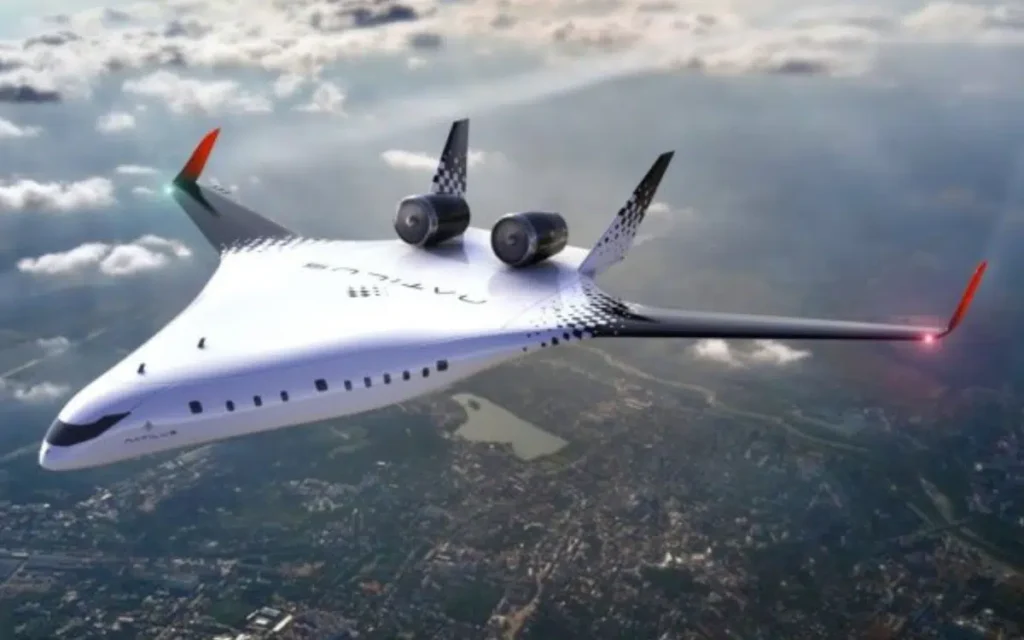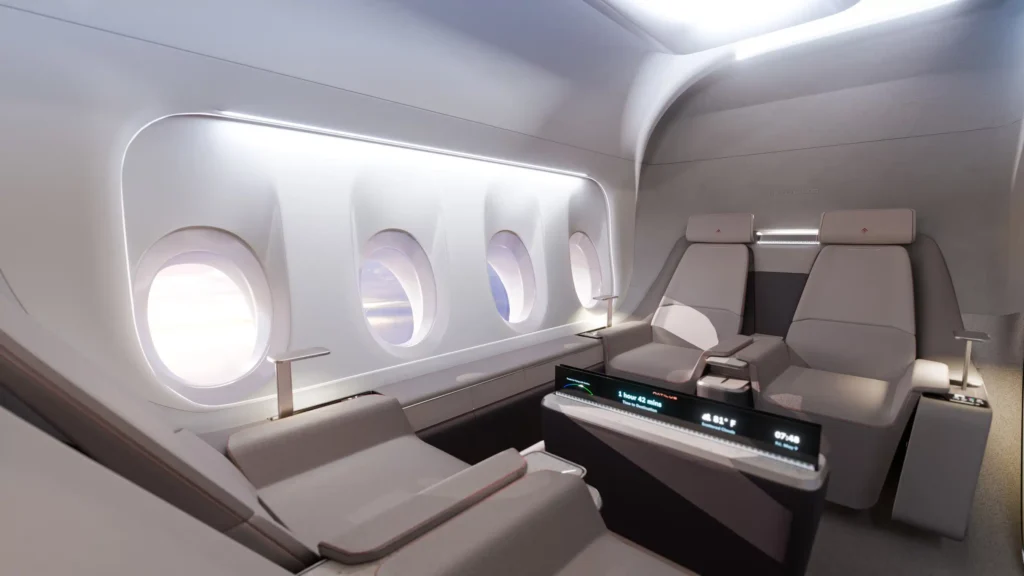The aviation world is abuzz with excitement over the first-ever look inside a blended wing body (BWB) aircraft, hinting at a potential new era in air travel. This innovative design, which seamlessly integrates the wings and fuselage into a single aerodynamic structure, promises to redefine efficiency, comfort, and sustainability, positioning it as a contender to dominate the skies in the coming decades.

Unveiling the Design
Recent glimpses into the interior of BWB aircraft, such as those from companies like JetZero and Natilus, reveal a radical departure from the traditional tube-and-wing configuration that has defined commercial aviation for over a century. The BWB concept features a wide, flattened body that generates lift across its entire surface, reducing drag and fuel consumption by an estimated 30% to 50% compared to conventional designs. The first interior shots showcase expansive cabins, offering a spacious, open layout that contrasts sharply with the cramped rows of current airliners. These interiors, crafted with input from design firms like Factorydesign, incorporate high-definition displays as virtual windows, zone-based seating for varied passenger experiences, and potential configurations for business-class swivel seats or even café-style social areas.
Technological Promise
The BWB’s aerodynamic advantages stem from its reduced wetted area—the surface in contact with the air—leading to lower drag and enhanced lift-to-drag ratios. Companies like JetZero, backed by the U.S. Air Force and NASA, aim to test a demonstrator model by 2027, with commercial deployment targeted for the early 2030s. The design supports sustainable aviation fuel (SAF) and future hydrogen propulsion, aligning with the industry’s push for net-zero emissions by 2050. Natilus’s Horizon, designed to carry up to 200 passengers with a 3,500-nautical-mile range, exemplifies how this technology could challenge the Boeing 737 Max and Airbus A320, potentially cutting fuel burn by half and increasing payload capacity by 40%.

Historical Context and Challenges
The BWB concept isn’t new, with roots tracing back to the 1920s when Russian pilot Nicolas Woyevodsky theorized it, followed by experimental models like the Westland Dreadnought. Military applications, such as the B-2 Spirit stealth bomber, have proven its viability, but civilian adoption has lagged due to manufacturing complexities, safety certifications, and infrastructure compatibility. Past efforts, including NASA’s X-48 program and McDonnell Douglas’s BWB-17, demonstrated stability and efficiency but never scaled to commercial use. Today’s advancements in composite materials, flight control systems, and digital engineering are overcoming these hurdles, though concerns about emergency evacuations and passenger comfort in a windowless midsection persist.
Industry and Public Sentiment
Aviation enthusiasts and industry leaders are optimistic, with posts on X reflecting awe at the “futuristic” design and its environmental potential. Airlines like Delta, partnering with JetZero, see it as a commercial opportunity, while the U.S. Air Force views it as a strategic asset for long-range logistics. However, skepticism remains—some question whether the benefits justify the cost and risk, given the entrenched tube-and-wing infrastructure. Critics also highlight the challenge of certifying a design that deviates so significantly from proven norms, a process that could delay its rise to dominance.
A New King of the Skies?
The BWB aircraft’s first interior reveal suggests it could indeed become the “new king of the skies” if it delivers on its promises of efficiency, sustainability, and passenger experience. Yet, its success hinges on overcoming technical, regulatory, and economic obstacles. As testing progresses toward 2027 and beyond, this design could reshape air travel, challenging the established narrative that incremental improvements are the only viable path forward. For now, it stands as a bold vision, blending innovation with the legacy of aviation’s most ambitious experiments.